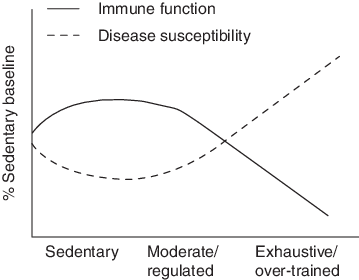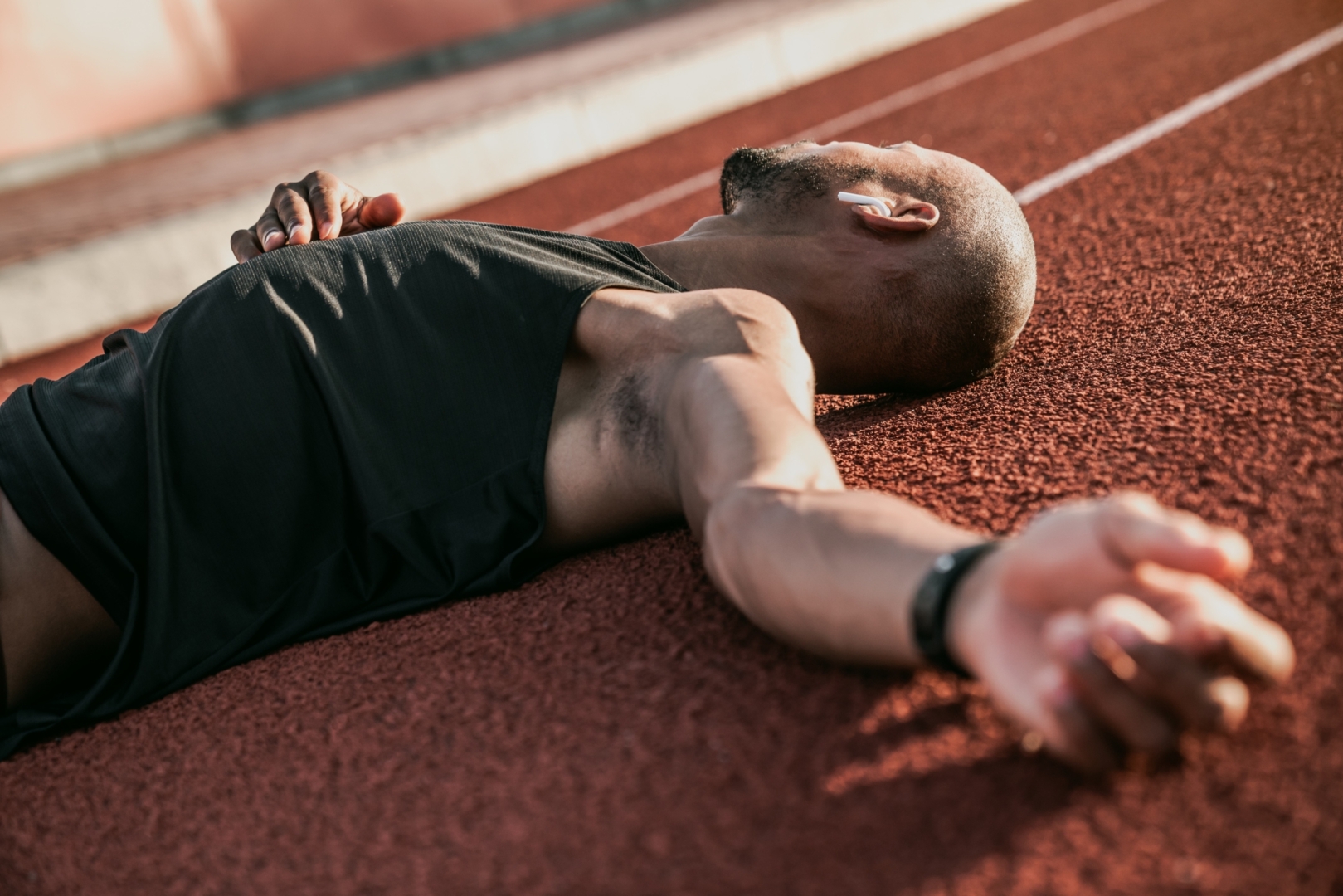Overtraining: It’s not a badge of honour
If exercise and training is good for health and performance, then more of it must be even better right? That might not be the case, as overtraining is a genuine concern for some athletes.
Overtraining myth: Don’t believe the hype
Often, as a keen sportsperson or when aspiring towards kickstarting your routine, you might find yourself looking to the greats for guidance into sporting success – what they eat, how they sleep, how they train, and what new gadgets they’re using to help with any or all of these.
For better or worse, the internet, and especially social media platforms, have made access to these high-profile athletes easier than ever. Partly, this may be for them to fulfil endorsement deals – “hi guys, of course I’m wearing my new headphones by xyz – I’d never train without them!” or it may just be videos documenting their day.
Often, training videos allow us an insight into what separates them from us. It seems combat athletes especially love to share ferocious training videos. Likely this is in part an effort to intimidate the opposition camp but it’s impressive, nonetheless.
Another tactic often employed by the pros to show how they are getting one up on competitors is the sharing of the early morning or late night session. Sometimes it is their second or third session of the day. Often these posts are accompanied by my least favourite hashtag (everyone’s got one of those right?!) – #nodaysoff
Today we’ll consider why the sentiment of this hashtag is unwise and how it potentially conveys the wrong message to impressionable fans with the best intentions at heart. Potentially, though, this seems a particularly hard stance on what is a sensible idea. If exercise and training is good for health and performance, then more of it must be even better right? Let’s see.

The theory of dose-response
I’ve often mused that if exercise could be put into pill form, the inventor would be an overnight billionaire. This is because exercise is capable of keeping many chronic health issues at bay, helps maintaining quality of life as we age and improves our mental health. It is also obviously hugely important for athletes looking to optimise their performance. It is therefore reasonable to think that if exercising a little will offer some of these benefits, then exercising a lot will magnify that response. And that is true – to a point.
Here we are talking about dose-response relationships, which consider the link between a given dose (in this case, exercise) and the response (in this case, better health or performance) to that dose. If the dose-response relationship for exercise followed a nice linear path, then yep, the more we do, the greater our return.
In reality though, this is not the case. This is demonstrated by understanding how our immune system responds as the amount of exercise we do increases. Below, we see a graph taken from a study comparing activity level and illness. It shows that in terms of keeping illness at bay, being moderately active makes us healthier but if we do too much, this benefit not only declines but we become more at risk of getting ill than sedentary people. So, it seems more may not always be better when it comes to how much exercise we do.

Figure 1: Amount of exercise undertaken and resultant immune function response.
What is overtraining?
The figure above is from research focusing on illnesses like common colds that we’re more likely to pick up as we become run down. More was also not better when it comes to more serious illnesses such as vascular disease. Here, moderate exercise was seen to reduce risk, though this was not further reduced when activity became more frequent.
Such consequences are a result of the interactions of special immune cells in our bodies. Extended challenging exercise over a period can lead to some of these cells being diverted to aid with exercise recovery rather than where they may be required to help combat more typical illnesses. But this isn’t all we’re at risk of. Here we’re talking about something you may have heard of – overtraining (not to be confused with overreaching).
Overreaching is really important in training. It’s pushing ourselves just beyond where we’ve been pushed before and it brings about adaptation in our body. It’s the whole point of exercising really, whether you’re looking for health or performance benefits.
One of the fundamental aspects of overreaching though is recovery. Without recovery time, we don’t allow our bodies the time to adapt. When we bunch up our training with #nodaysoff we put ourselves at risk of overtraining. Overtraining is when the illnesses seen in the figure above creep in. It’s also when we’re more likely to get injured and find things tougher psychologically – not a good combination!
So, now you start to see the problem. We think if some is good, then more has to be better. So, we go for it. But then we start to get overtrained, and we get ill or injured. The most important part of a successful training regime is consistency. It’s therefore hugely counterintuitive if we work so hard that we’re not able to work anymore. You might have three ‘good’ weeks but if it’s followed by an enforced two-week absence through illness or injury, then what’s the point?
These negative consequences are in part a result of our stress hormones (normally produced during exercise) becoming too high, the small damage we do to our muscles (required for them to build back stronger) not being repaired and poorer nutrition (caused by a lower mood) also slowing our recovery process. This is a bad cocktail that obviously isn’t going to allow us to achieve what we want. It’s also a vicious cycle. Adding to this cycle is the fact overtraining can lead to poor sleep, which impacts our ability to recover even further.
How to recover from overtraining
Firstly, how might you know if you are doing too much? You don’t want to be backing off if you’re doing the right amount, as that will lead to you not getting the benefits. Some tell-tale signs that you might be overtraining can be that you’ve hit a plateau in your progression, you’re especially sore or tired following sessions or that your mood or sleep is suffering.
Working with an experienced coach or personal trainer can help with this, as they should be able to correctly plan your rest as well as your training – something we often overlook!
It may also be useful to consider the type of activity that is best for you. For example, if you want to embark on frequent running and have a lot of weight to lose, then the potential for knee, hip and back injuries is quite high due to the load on those joints. Here, it may be advantageous to substitute non-load bearing exercises such as cycling or swimming into some sessions while your weight is high.
Also, as a beginner, how much exercise we’re able to tolerate is also dependent on our experience, or what we might call our training age. Mo Farah didn’t start running 140 miles a week from day one! As well as factoring in days off in each week, you should also consider having a ‘down’ or ‘low’ week every six to eight weeks. We call this periodising our training and it’s important to keep overtraining at bay.
Some of us though find it hard to do nothing on rest days. If you’re one of those, then rest assured (literally) that it’s still fine to go for a walk or to do some low-intensity yoga or similar. Do keep in mind though that it’s definitely fine to embrace days off. This is when our body takes the time to rest and repair, giving you the greatest benefit from the hard work you’ve put in.
Take homes on overtraining
When we consider the top of the pyramid in professional sport – the LeBrons and Cristianos – we need to remember that they are also likely top of the pyramid genetically. There is a chance they are simply able to tolerate high training frequencies and intensities!
Sadly, it’s likely this isn’t the case for almost all of us. We also need to remember they don’t have another job to go and do and they have full-time chefs, massage therapists and every other aid under the sun. This makes being a full-time athlete, and the accompanying increased training load, considerably easier to handle.
So, for us mere mortals, while it’s nice to draw inspiration from our idols, remember that for our progression, slow and steady wins the race. Consistency is indeed key but those days off are likely just as important as the days when we’re making it count in the gym.



